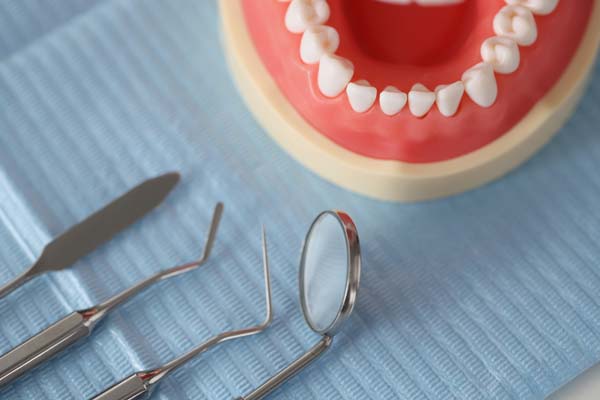Dental Ridge Preservation: Dental Implants

Dental ridge preservation is a way to preserve the socket after a missing tooth develops. Dental implants require adequate bone support, and bone loss can occur after losing a tooth if the bone density is not preserved. This review offers insights into the purpose of dental ridge preservation as it relates to dental implants treatment.
Ridge preservation and dental implants
Ridge preservation may prevent the need for a bone graft procedure after tooth extraction or tooth loss, particularly if the patient plans to replace the tooth (or teeth) with dental implants. The following is everything to know about dental ridge preservation and dental implants after a missing tooth or multiple missing teeth.
The purpose of dental ridge preservation
Dental ridge preservation, also called socket preservation or a ridge augmentation, reduces the impact of bone loss after tooth extraction or tooth loss. Bone loss can occur after a tooth extraction if the socket is not preserved. This is particularly an issue if the patient plans to replace the missing tooth with a dental implant, dental bridge or denture. If the bone loss occurs, there may not be enough healthy bone to support an implant, leading to implant failure. Fitting a bridge or denture could become a concern as well without dental ridge preservation.
Dental ridge preservation before dental implants
As mentioned, dental ridge preservation is an important step if the patient plans to replace one or more extracted or missing teeth with a dental implant. Dental ridge preservation involves filling the socket with bone or an artificial replacement substance to prevent bone loss inside the jaw. With dental ridge preservation, the patient can often jump straight into the dental implants placement process, whereas a loss of bone in the jaw may lead to a need for more extensive treatment (see below).
What to expect without dental ridge preservation
Without dental ridge preservation, the likelihood of significant bone loss inside the jaw is greater. If bone loss does occur, then the risk of a failed dental implant also increases. Patients who lose too much bone after tooth loss require a bone grafting procedure to replace the missing jawbone before the dental implants procedure. While it is safe, bone grafting is more invasive and makes the dental implants process take longer.
How the dental implants process works
The dental implants process after dental ridge preservation or bone grafting (when necessary) involves a minor surgery to place the dental implants, followed by a healing period where the implant fuses with the jawbone. Once the mouth is healed, the abutment and artificial tooth are placed to complete the restoration process, and the patient can enjoy their new smile for years to come.
Talk to our dental team to learn more about dental implants
Contact our dental team by phone or email to arrange a consultation visit if you have any dental concerns or would like to learn more about dental ridge preservation or dental implants. We are experienced and take pride in helping our patients improve the oral health and appearance of their teeth and smile.
Request an appointment here: https://www.rockvillefamilydental.com or call Rockville Family Dental at (301) 575-0941 for an appointment in our Rockville office.
Check out what others are saying about our dental services on Yelp: Dental Implants in Rockville, MD.
Recent Posts
Asking a dentist about the dental implant process, including crown placement, is the only true way to know if it is an effective replacement for your oral condition. Therefore, every patient should feel free to ask their dental professional questions about their recommended procedures or treatment options. Unfortunately, too much information is available nowadays to…
If an implant dentist has suggested replacing a lost tooth or teeth with dental implants, it might help learn about the cosmetic benefits of that choice. Dental implants are a durable and reliable solution for missing teeth and the benefits are remarkable. By replacing lost teeth, patients can get their smiles back as well as…
Anyone considering dental veneers should understand the details of how they work to help determine if they are candidates. These thin, shell-like pieces are a cosmetic dentistry treatment that enhances the overall appearance of the teeth. Here are the various ways that general dentists utilize veneers for their patients.Veneers are thin porcelain shells that a…
If you have recently replaced a mouthful of teeth, you are probably adjusting to new dentures. Although dentures greatly improve your smile, this does not mean you immediately become used to wearing them. The good news is there are methods you can use to help adjust, and in about a month, your dentures should start…


